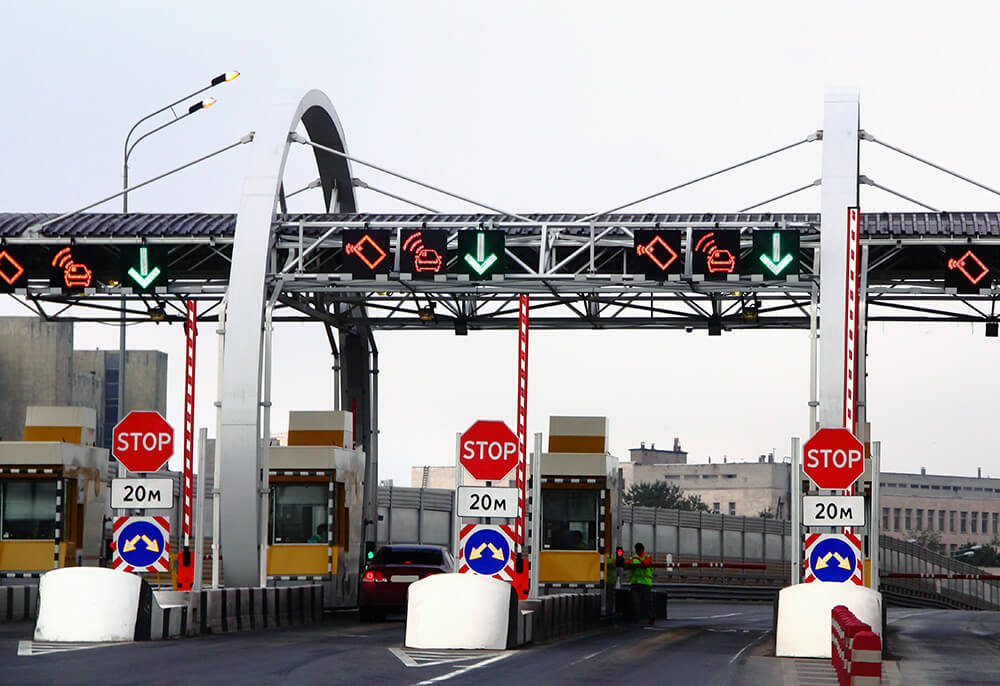Smart Highways and Intelligent Transport Systems
You may be as surprised as we were to learn of existing technological advancements that will dramatically change the experience of driving, are soon going to appear on roads across the globe. Smart highways and intelligent transport systems are expected to improve safety; the efficiency of traffic flow and environmental sustainability.
We asked GIMI lecturer, Ur Omry, an industrial engineer, long experienced in transport management to give us a glimpse into what is to come:
"The participants in our transport courses often say, 'In our countries, we have dirt roads. How are the technological advancements of smart highways and intelligent transport systems relevant to us?'" says Omry. "Now is the best time to learn about what is coming so that when you begin to build, you will do it right, setting the foundations for integrating what the future will bring."
He explains that to convert an existing paved road into a smart highway is much more difficult and expensive than to prepare the necessary infrastructure when building them for the first time.
“Transport roads are ancient and apply ancient technology,” says Omry. Both the terms Smart Highways and Intelligent Transport Systems (ITS) refer to the integration of computer and communication advancements into this old world system.
Smart Highways
The disturbing number of road casualties and the hours lost in traffic jams can be addressed with smart highways. Roads built to create a smooth flow of traffic lead to more efficient fuel consumption and even less roads. Minimising the delays that result from traffic jams contributes to the productivity of the economy. So how can we make highways smart?

Tolling
“One way,” explains Omry, “is to introduce different types of tolling. In order to encourage people to carpool or, better yet, use public transport, a carpool lane may be created for vehicles with four (in the US it is sometimes 2) or more people.” These are called High Occupancy Vehicles (HOT). Vehicles with less passengers may also be permitted to drive in the express lane, but they will be required to pay. This is called High Occupany Tolling (HOT).
There are different methods of determining the price that will be charged. One way is to increase the price as the lane gets more congested, making the lane less attractive and reducing congestion. Another option is to determine the amount by how fast or slow the vehicles in other lanes are driving (General Purpose Lanes). The slower the vehicles drive, the more vehicles will be charged. Once traffic speeds up, the price will be lowered.
Intelligent Transport Systems (ITS)
Communications technology, optics, electro mechanics and software developments are forms of new technology that can be integrated in traditional transport systems. Information on road conditions can be provided directly to drivers via devices that can stream the information directly into the car (meaning road signs will no longer be necessary).
“Traffic lights are a great tool for managing traffic,” says Omry. “It is a good example of old ITS that can integrate new advancements.”
Traffic lights can be sensitive to traffic coming from different directions. They can recognise emergency vehicles and give them priority. They can collect and distribute information to warn drivers about traffic, speed limits and inclement weather. Using this information when there is an accident, lanes can either be blocked off or opened and a lane cleared for emergency vehicles.
The integration of CCTV can provide pictures of vehicles that also offer information and assist in traffic management.
Yet another advancement involves the use of real time navigation systems that use information from historical data, together with current information on the road, to provide forecasts. The forecasts can be communicated to traffic lights, which will respond by timing the lights in a way that prevents traffic jams. This product already exists.
ITS and the Cars of the Future
Technology is available to be built into cars to keep us safe:
For example, the steering wheel will start to shake or an alarm will sound when a driver departs from their lane without signaling. There are systems that can identify an inattentive driver. A camera has been developed that recognises how often your eyes close in a normal state of awareness and can identify when they are closing an abnormal amount of times when you are dozing off.
Other systems are available to protect pedestrians. If a person walks out in front of the car and the car is driving 30 km or slower the car will simply stop. If the car is driving faster, it will slow down drastically, to a safe pace.
“These are active systems that take control of the car but do not replace driver alertness,” says Omry.
There are systems available that will park your car for you. There are advanced systems of cruise control that not only maintain speed, but also sense the speed of the car ahead of you, slowing down when necessary so that you do not have to disengage.
Electric cars, too, are already on the road and are more functional and practical than previous models. Current models can drive distances closer to those of conventional vehicles before having to recharge. The cars themselves are becoming less expensive and more aesthetically attractive. TESLA, for example has created a sporty electric vehicle with an impressive battery life. The future is here.

Communication
Communication technology is advanced enough today to enable vehicles and infrastructure to “talk to” each other, enabling live updates of information that could make driving safer and more efficient. V2V (vehicle to vehicle), I2V (infrastructure to vehicle and V2X (vehicle to anything else) is all possible and will soon be implemented.
One example of V2V is called V2V Platooning. That is, if truck drivers are in convoy, they will be able to drive quite close to each other while relying on the trucks themselves to communicate road conditions and speed. Such technology reacts far quicker to what is happening on the road than a human can. By driving close together there is less friction with the air, which can conserve fuel consumption by 7%. Time, money and environmental sustainability are all gained.
Another example of I2V is the integration of sensors in “cats' eyes” that separate between lanes, developed to read the speed of vehicles and other road conditions. If a car stops on the side of the road or the road is icy, the cats' eyes can send information directly to a smart vehicle.
Autonomous Vehicles
Omry tells us that efforts to create autonomous vehicles began decades ago by car manufacturers. When hi-tech companies joined the effort there was a big push forward. The biggest push started with a Google self-driving car project that now belongs to WayMo, has succeeded in creating a fully autonomous car. They are no longer alone. Many start-ups and high tech companies are also beginning to invest in autonomous vehicle projects. “There is a general belief that autonomous cars will lead to less accidents,” he says, “and vehicles will not need to maintain large distances, saving fuel and creating better traffic flow. It may be possible that they will also reduce the need for new roads.”
“The state of the driver becomes irrelevant,” he adds. “Drivers can safely be sick, drunk or even children. There will be less police and road signs. Parking may be less of an issue. Your car will be able to take you to work, go home to park and then pick you up. However there are new challenges that arise as well.”
For example, how will cars made by different manufacturers communicate with each other? Who will be responsible if there is an accident? The manufacturer? The “driver”? As we can expect autonomous cars on the road in the near future, insurance companies are already discussing these issues.
Cyber security must be developed. If the vehicle is open to receiving information it can also be hacked. A hacker could put the driver in danger by releasing the brakes; increasing the volume of the radio to an intolerable level; turning the wheel; opening the windows, etc. Developers must find ways for the vehicle to identify and validate the source of communication before allowing it to enter the system.
---
During lectures, when participants from international governments express that they feel way behind, Omry responds, “You have the opportunity to provide information about the conditions to be prepared for what is coming.” Governments must already begin discussing how to be prepared, whether by providing the infrastructure foundations or formulating legal frameworks for law enforcement and security.
Ur Omry lectures in our Trasport: Planning Development and Management Programme.

